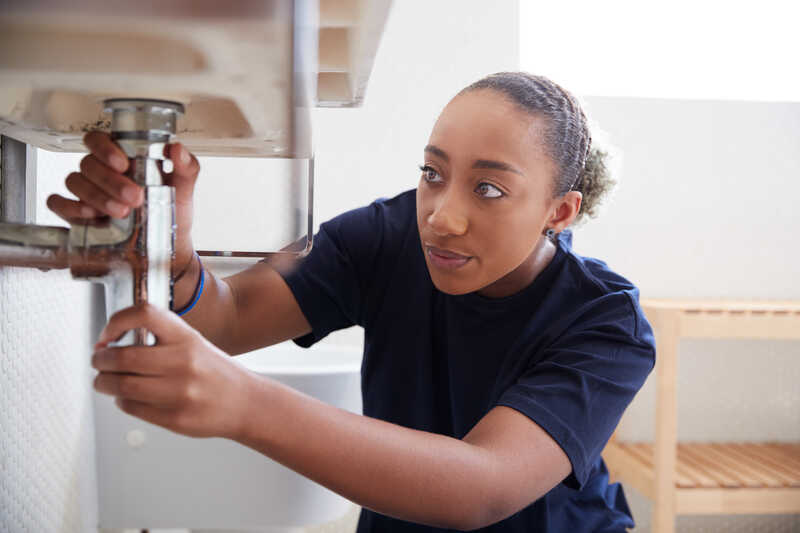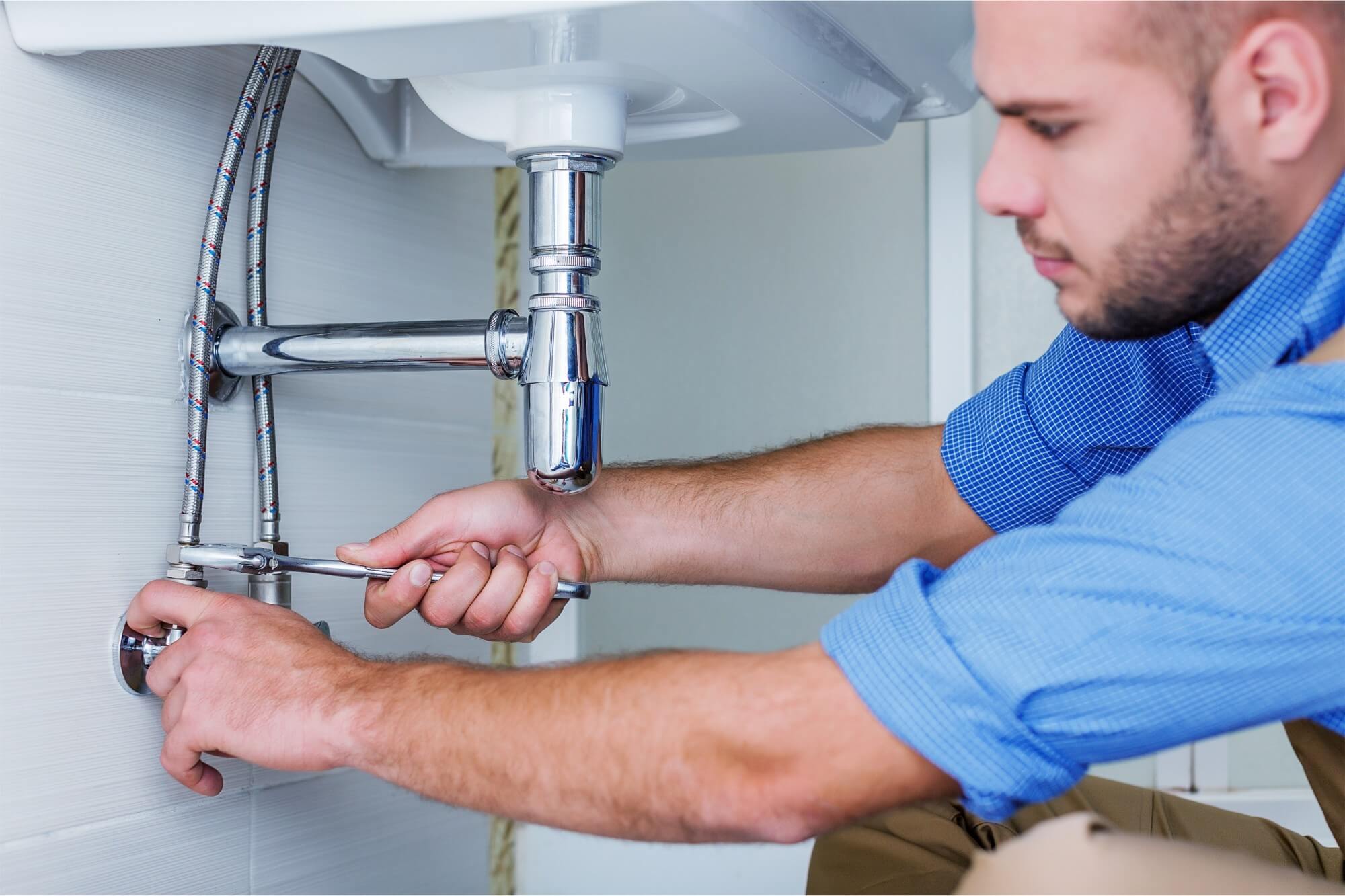Typical Plumbing Issues Every Homeowner Must Be Conscious Of
House owners often come across a series of pipes issues that can disrupt every day life. Typical issues consist of leaking faucets, stopped up drains pipes, and running commodes. These problems usually originate from worn-out parts or debris build-up. Furthermore, reduced water pressure and burst pipes can signify much deeper issues. Recognizing these challenges is essential for efficient upkeep. There are various other much less apparent problems that can occur, which necessitate closer assessment.
Leaky Taps
Leaking taps can be a discouraging problem for home owners. These persistent leaks not only develop an irritating noise yet likewise result in squandered water and enhanced utility expenses. A dripping tap commonly results from worn-out washers, O-rings, or seals, which degrade gradually as a result of routine usage and exposure to water. Sometimes, the faucet's inner components might be rusted or damaged, requiring an extra comprehensive repair work or replacement. Recognizing the resource of the leak is vital; homeowners might need to disassemble the tap to analyze its parts carefully. Routine maintenance can help prevent leaks, consisting of cleansing aerators and examining for signs of wear. Attending to a leaky faucet immediately can save water and lower prices, making it a manageable yet important task for home owners to tackle in preserving their pipes systems effectively. Proper attention to this common problem can cause a more comfy living atmosphere.
Blocked Drains
Many property owners experience the stress of clogged drains pipes eventually. This typical plumbing concern can develop from numerous reasons, including the buildup of hair, soap residue, food fragments, and grease. These materials can produce blockages that impede the flow of water, causing reduce drain or complete stoppage.In kitchen areas, oil and food scraps are typically the culprits, while washrooms regularly struggle with hair and soap buildup. Normal maintenance, such as using drain filters and staying clear of putting fats down the sink, can aid protect against clogs.When a blockage does occur, house owners might attempt to utilize a plunger or a business drainpipe cleaner as preliminary remedies. Persistent issues may require professional help to avoid damages to pipes. Recognizing the causes and avoidance approaches for blocked drains can conserve house owners money and time, making certain a smoother plumbing experience

Running Toilets
Running commodes are a common concern that can originate from numerous causes, including damaged flappers and chain troubles. The constant running not just wastes water yet additionally results in enhanced energy costs. Addressing these concerns quickly can recover and stop more complications efficiency to the pipes system.
Causes of Running Toilets
A consistent circulation of water from a toilet can be both wasteful and bothersome, frequently signaling underlying concerns within the pipes system. One common reason is a worn flapper shutoff, which might not produce a correct seal, enabling water to constantly leakage into the dish. Additionally, a malfunctioning fill shutoff can result in too much water flow, adding to the issue. Misaligned float devices may likewise create the toilet to run as they stop working to regulate the water degree suitably. Another prospective problem is mineral build-up, which can obstruct elements and prevent their capability. Identifying these reasons quickly can help property owners deal with the trouble prior to it rises, making certain efficient procedure of their pipes system.
Effects of Continuous Operating
Although typically ignored, the repercussions of a constantly running toilet can greatly affect both water use and family costs. A running commode can throw away approximately 200 gallons of water daily, leading to increased water bills and unneeded source usage. This extreme water usage not just strains the home budget yet likewise adds to ecological concerns, specifically in locations encountering water shortages. Additionally, the consistent sound of running water can be a resource of nuisance, interfering with the harmony of the home - Plumbing. In addition, extended problems might cause even more substantial pipes troubles if left unaddressed, leading to further financial concerns. Homeowners ought to identify the importance of prompt repairs to alleviate these negative results and maintain an effective pipes system
Repairing Running Toilet Issues
Bathrooms that continuously run can be a frustrating concern for property owners, but recognizing the reason is the primary step toward an effective solution. Common causes include a faulty flapper, which might not create an appropriate seal, enabling water to get away right into the bowl. If required, house owners must evaluate the flapper for wear and change it. Furthermore, the fill valve can be malfunctioning, causing excess water to flow continuously. Changing or changing this component may solve the issue. An additional possible wrongdoer is a misaligned float, which can be gotten used to the appropriate elevation. Routine maintenance and timely repair work can avoid running commodes, guaranteeing both water conservation and expense savings on energy expenses.
Low Tide Stress
Low water stress can be an irritating experience for homeowners, typically manifesting as a weak stream from taps and showerheads. This concern can stem from numerous reasons, including sediment accumulation in pipelines, corroded pipes, or concerns with the metropolitan water system. Home owners might at first observe low water pressure in particular locations of the home, however it can escalate to a more extensive problem if not dealt with promptly.In some cases, malfunctioning pressure regulatory authorities can also be accountable for inadequate water circulation. Normal maintenance, such as purging the water heating system and checking for obstructions, can aid mitigate these issues. It may be required to get in touch with a professional plumbing professional to detect and deal with the underlying cause if low water stress lingers. Identifying the resource of reduced water stress is vital for restoring correct water flow and ensuring a practical pipes system.
Burst Water lines
Ruptured pipes can be a serious pipes concern, often resulting from the very same elements that add to low tide pressure, such as temperature fluctuations and maturing facilities. When water freezes within pipelines, it expands, enhancing pressure until the pipeline can no much longer contain it, causing a rupture. In addition, corrosion from extended direct exposure to water can weaken pipes, making them prone to breaking under normal pressure.Homeowners may notice signs of a burst pipeline with unexpected water leaks, wet spots on wall surfaces or ceilings, and an unanticipated boost in their water costs. Immediate action is essential; falling short to attend to a ruptured pipeline can result in substantial water damages, mold development, and costly repair services. Regular assessments and upkeep of plumbing systems can aid stop this problem. In addition, protecting pipes in cooler areas and replacing old piping can substantially decrease the danger of burst pipes, guarding the home's plumbing stability.
Hot Water Heater Issues
Exactly how can house owners identify water heating unit issues prior to they intensify? Normal assessment and upkeep can help spot possible problems early. Homeowners need to look for signs such as inconsistent water temperature level, uncommon sounds, or a decline in hot water supply. Leakages or puddles around the system may suggest a breakdown that calls for prompt interest. The look of rust or sediment buildup can additionally signify the need for maintenance.Additionally, house owners must monitor the age of their water heater; most systems have a life-span of 8 to you could try these out 12 years. If the heating unit is approaching this age and showing indicators of wear, it may be time to review substitute. Normal flushing of the storage tank can stop debris accumulation, prolonging the unit's life. By continuing to be alert and addressing issues promptly, home owners can avoid pricey repairs and guarantee their water heating unit operates successfully for several years ahead.
Sewer Line Problems
Several home owners might experience sewer line issues at some time, affecting their pipes system's total performance. Common issues include clogs, tree root breaches, and pipe damages. Blockages frequently result from the build-up of oil, hair, and foreign things that obstruct the flow of wastewater. Tree roots can penetrate sewage system lines, triggering leaks and fractures. In addition, aging pipelines might corrode or damage, causing more problems (Plumber). Signs of drain line difficulty include slow-moving drains, unpleasant smells, and sewage back-ups, which can position wellness threats. House owners must address these issues quickly to avoid comprehensive damage and expensive fixings. Normal maintenance, such as scheduled evaluations and cleaning, can assist stop considerable concerns. In serious instances, specialist treatment might be required to repair or replace damaged sections of the sewer line. Recognizing these prospective issues can assist home owners take positive measures to preserve their plumbing systems effectively
Often Asked Concerns
How Can I Protect Against Pipes Issues in My Home?
To stop plumbing troubles, regular maintenance is crucial. House owners need to examine pipes for leakages, clean drains, and display water stress. Additionally, educating themselves concerning appropriate usage can considerably lower the threat of future plumbing problems.
When Should I Call a Plumber As Opposed To Fixing It Myself?
When to call a plumbing professional typically depends on the extent of the problem, determining. Significant leakages, consistent obstructions, or strange issues necessitate expert support, ensuring safety and security and stopping additional damage as opposed to taking the chance of personal attempts at fixing.
What Are the Signs of Hidden Pipes Leaks?
Indicators of concealed plumbing leakages include unexplained water costs, wet places on ceilings or wall surfaces, mold and mildew growth, and a moldy smell. These signs frequently recommend underlying problems that need expert analysis and repair service for resolution.
How Typically Should I Have My Pipes Examined?
Normal pipes examinations are recommended each to two years. This frequency helps recognize potential concerns early, making sure the system stays efficient and reducing the danger of expensive repair services or unforeseen emergency situations in the future.
Are There Do It Yourself Solutions for Minor Pipes Issues?
